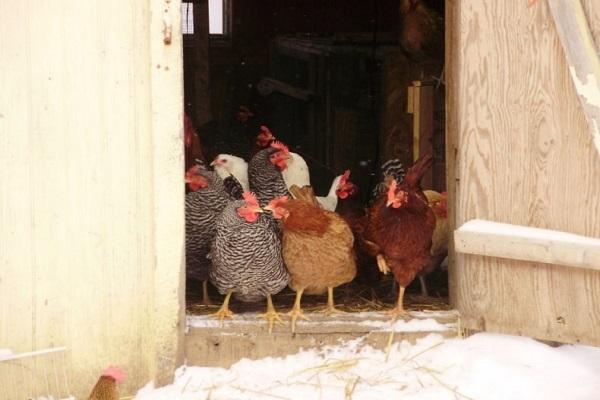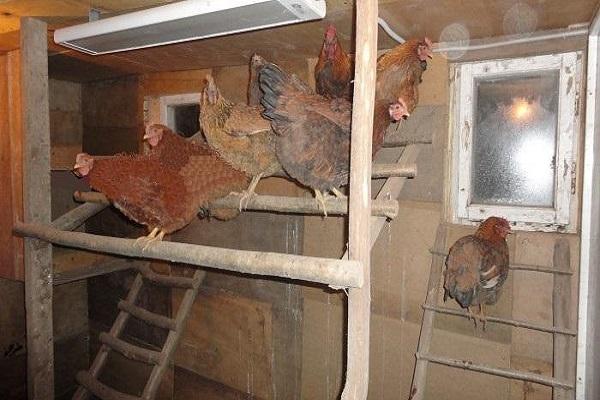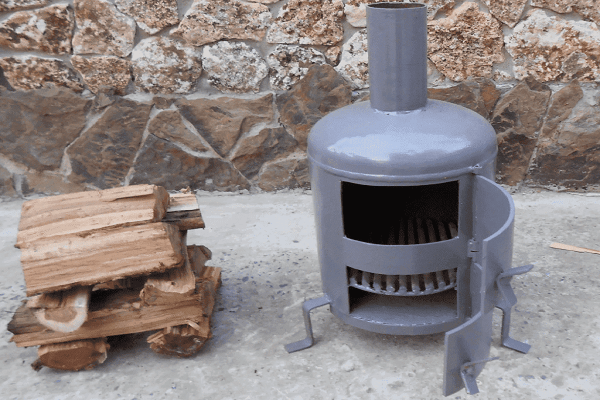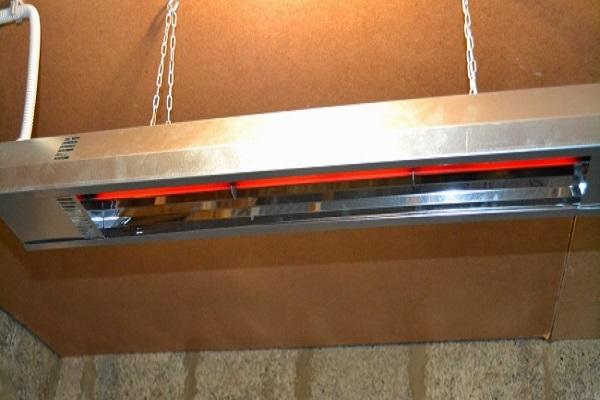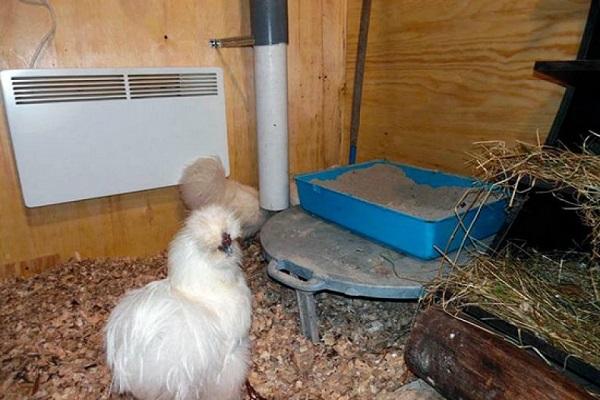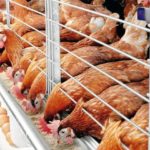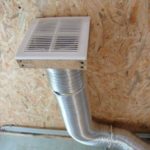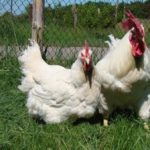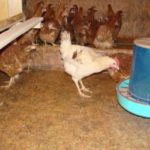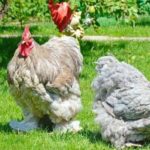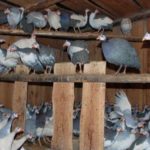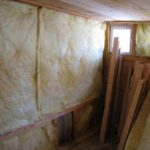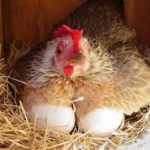Many poultry farmers want their chickens to consistently produce eggs all year round, and not just in the warm season. To do this, laying hens need to create certain conditions, since in winter, due to a decrease in the temperature level and the amount of lighting, egg production in birds decreases. The chicken coop should be properly prepared for the winter cold so that the birds feel comfortable. Let's figure out what the temperature in the chicken coop should be in winter for stable egg growth.
- Do chickens lay eggs in a barn without heating in winter?
- How cold can chickens withstand?
- In the chicken coop
- On a walk
- Optimal temperature in the chicken coop in winter for laying hens
- Methods of heating a room
- Household heaters
- Gas heating
- Potbelly stove
- Infrared heaters
- Infrared lamps
- Water heating
- Food for warmth
Do chickens lay eggs in a barn without heating in winter?
In regions with a temperate climate, it is possible to do without additional electrical heating. You need to get rid of all the cracks in the room, leaving only one hole for ventilation. The walls must be double, with insulation. There should be a thick bedding on the floor.
By equipping the poultry house in this way, you can ensure a positive temperature without electrical appliances and gas heaters, provided that there are no severe frosts in winter in your region. However, most often it is impossible to do without heating equipment - chickens will feel unwell in the winter cold and produce fewer eggs.
How cold can chickens withstand?
The temperature at which birds are kept, as well as proper nutrition, directly affects their ability to produce eggs. The specific temperatures that chickens can withstand depend on their breed - there are breeds that are relatively frost-resistant and are not afraid of small climatic changes. Other breeds are sensitive to cold and need the right conditions.
In the chicken coop
Birds should not be exposed to frostbite while in the coop. Therefore, it is vital to maintain the temperature at a suitable level. The optimal indicator indoors is twenty-five degrees Celsius, the minimum below which the indicators should not fall is fifteen degrees Celsius.
On a walk
In mild cold weather, birds should be released for a walk. Fresh air is useful for maintaining the life of laying hens. The walking yard must be securely fenced.It is advisable that the fence be high, as many breeds of chickens are able to jump over low fences.
The walk itself should be carried out in sunny and non-frosting weather, at a temperature not lower than minus ten degrees Celsius.
The birds' stay in the air should last no more than two hours to avoid frostbite.
Optimal temperature in the chicken coop in winter for laying hens
In order for chickens to lay eggs regularly and produce a stable quantity and quality of eggs, the room temperature should be kept at about plus twenty-five degrees Celsius. This is the optimal temperature for maintaining normal life and egg production. At the same time, the temperature should not fall below fifteen degrees throughout the season - this is the minimum at which the chicken is capable of producing eggs.
If the temperature drops below this level, the bird may become ill and die.
Be careful about heating the room during the cold season so as not to endanger the birds.
Methods of heating a room
Sometimes it is enough to equip the poultry house with double walls with heating and thick bedding on the floor, carefully sealing all the cracks in the structure. However, this method will only work in regions where there are no severe frosts during the cold period.
For most regions of Russia, it will be necessary to install additional equipment for artificial heating in the room, otherwise the chickens will not be able to withstand the winter cold and will not regularly produce eggs. Let's consider the types of heating devices suitable for installation and use in a chicken coop.
Household heaters
Household electric convectors are suitable for heating the room.The principle of operation of the convector is that it draws in cold air and releases it already heated, after contact with the heating element. The main disadvantage of convectors is their high energy consumption. Such heaters are suitable as an additional source of heat, but it is problematic to use them as the main one.
The situation is the same with oil radiators. An oil radiator is capable of heating the air directly around itself, while consuming a significant amount of electricity.
Gas heating
A gas heater is more suitable for heating rooms, but such devices are usually expensive. The boiler is suitable for a large industrial chicken coop, but for a small private poultry house its purchase would be an unnecessary expense. Plus, using a boiler can be dangerous for birds, so it needs to be constantly monitored.
Potbelly stove
Unlike a gas boiler, a compact stove-stove is a suitable option for heating a private chicken coop. It does not take up much space and can warm the room. A potbelly stove is inexpensive, but you need to be prepared for the fact that, unlike infrared heaters, it will require fuel in the form of coal or wood to operate.
You will need to install a chimney in the room and constantly monitor the operation of the device, adding fuel when required. A diesel oven is also worth considering as an alternative.
Infrared heaters
An infrared heater is the best choice for heating a chicken coop. It does not require additional fuel, it uses energy economically and is safe to use.A special feature of the infrared emitter is its operating principle - under the influence of radiation, it is not the air itself that is heated, but objects inside the room.
Heating of the air occurs directly from hard surfaces and objects. Depending on the specific model, the emitter can be installed on the floor, wall or ceiling. This is a compact and ergonomic device, simple and intuitive to use.
Infrared lamps
Another option for an infrared emitter is an infrared lamp. This is a compact device that works on the same principle, but is designed for a smaller space. One light bulb is enough to warm a ten square meter room.
The lamp will cost less than a full-fledged infrared heater, so it is a more cost-effective option for a small room.
Water heating
If your house is equipped with a water boiler and the chicken coop is located nearby, it is possible to run pipes into the chicken coop. In this case, the poultry house will receive heat directly from the boiler located in the house. If there is such an opportunity, it would be best to use it, since this is the most practical heating method, requiring a minimum of additional costs for heating equipment.
Food for warmth
Of course, heating alone is not enough for laying hens to feel good and produce eggs consistently during the winter season. In addition, you should take care of the correct diet.
In winter, the frequency of feeding should be increased to three times a day. Diversify your birds' diet with vegetables, cereals, and mash. Give the birds wheat and oats. Use vitamin and mineral supplements.

